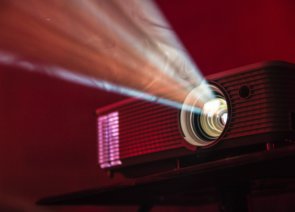Often, we visualize our pictures so that every detail would be clearly seen. However, sometimes not everything goes smooth, and some blurry, not sharp and fuzzy areas appear in the picture. In this article we tried to identify all the factors affecting sharpness in photos.
- Optical characteristics of the lens. All lenses are different, and some do have lower resolution and capture micro-contrast worse. The framework of this article won’t allow making a global review of all lenses here, but we should only note that in the vast majority of cases, lenses with a fixed focal length have better characteristics in this respect.
- Aperture. Sharpness depends on the chosen aperture value — as a rule, a lens resolution is not high at open apertures, then it increases as you approach f/8, and after f/11-f/16 it drastically drops due to the diffraction effect, despite the increase in depth of field.
- Focusing. First of all, here fans of the refocusing technique are at risk. With a shallow depth of field, any change in the distance between a camera and an object even by a centimeter during refocusing can cause the loss of sharpness on the object or a shift of focus from the eyes to the ears in case of portrait shooting. Mind the distance between the camera and the object, or better choose a suitable focus point.
- Front/back focus. This issue can be attributed to technical malfunctions. When a lens or a specific lens-camera mix regularly errs in the focusing process — carry it to the service support.
- Shutter speed. As you know, we can make a photo sharp when shooting from our hands only at fast shutter speeds, measured in fractions of a second. Few amateur photographers know about the direct correlation between shutter speed and focal length. The shutter speed denominator (for example, in 1/200 sec shutter speed, the denominator is 200) must be greater than the selected focal length to avoid blur. For more information on how to apply this rule and various special cases join our Basic photography course.
- Stabilizer. A stabilizer in a lens or camera allows you to slow down the shutter speed for 3-5 steps, for example, use 1/8 sec instead of 1/125 sec. Remember that a stabilizer does not guarantee sharp pictures, but only increases the percentage of successful ones, so the more you rely on it, the more spare pictures you need to take.
- Resolution. The higher is the camera’s resolution, the smaller is the pixel. The smaller is the pixel size, the smaller shift of camera will be noticeable in the picture. For this reason, owners of multi-pixel cameras (from about 30-36 megapixels) should reduce shutter speed for another 1.5-2 steps, in addition to the rule in paragraph 3.
- SLR cameras, and especially high-resolution cameras are susceptible to microvibrations due to the jumps of the mirror, which can lead to micro-blurs even on a fully stationary camera, which will be especially noticeable at medium-range shutter speeds (from 1 second to 1/50 second). In this case, use shooting mode with mirror pre-lift. The first time you press the button, the mirror goes up, with the second time — camera makes a picture.
- In the above indicated average shutter speed range, the photographer’s hands can also affect the sharpness, even if a camera stands on a stable tripod. Pressing the shutter button causes small vibration. This can be avoided either by timer shooting with a minimal delay, or by using a remote control.
- Tripod. For shutter speeds longer than 1 second, the quality of a tripod is critical. It must be stable, heavy enough, with reliable mechanisms for fixing the positions and stand on a firm ground.
- The cause of the blur can literally be on the surface. On the surface of a lens. Fingerprints, dust, bad wiping can lead to a decrease in sharpness. Keep the lens clean, check the front and rear lenses.
- Another reason for reducing image quality may be a cheap or low-quality filter. Remember that any obstacle between the lens and your frame cannot but affect sharpness. Only high-quality filters from trusted manufacturers will allow to attain almost original quality.
These are all the methods I know for optimizing sharpness at shooting. The rest of the methods lie in the field of combined shooting techniques and processing.
Peter Pokrovsky








